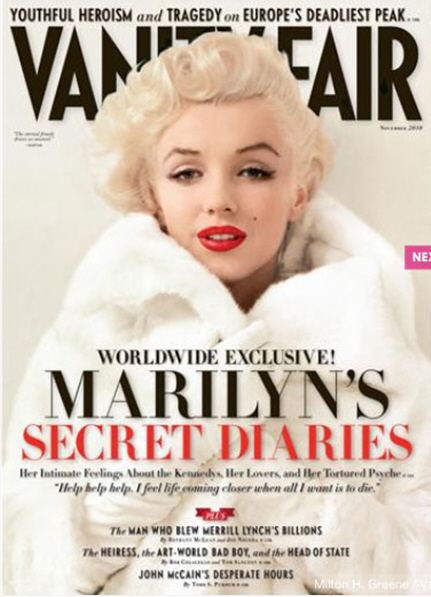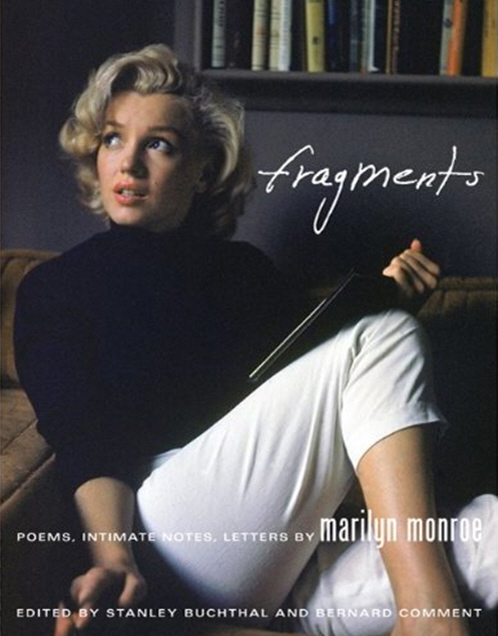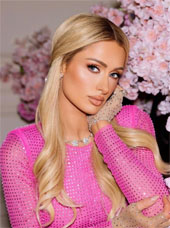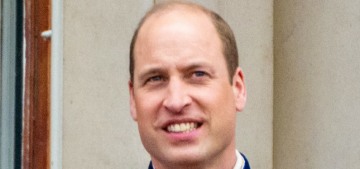Jesus. Christ. Vanity Fair’s obsession with all things Kennedy and all things Marilyn Monroe has already gone way, way overboard. And now this – yet another cover devoted to their journalistic necrophilia. Another Marilyn cover! And this time it’s all about her “secret diaries”. Ooh, scandal! What other NEW information could possibly be covered that hasn’t already been discussed and rehashed and masturbated to (journalistically!)? Vanity Fair excerpts from a NEW book about Marilyn, Fragments: Poems, Intimate Notes, Letters by Marilyn Monroe, edited by Stanley Buchthal and Bernard Comment. So it’s Marilyn in her own words? Of course not. There’s still quite about to say about Marilyn, so Vanity Fair couldn’t help themselves. Did you know that she was BLONDE?!?
She was always late for class, usually arriving just before they closed the doors. The teacher was strict about not entering in the middle of an exercise or, God forbid, in the middle of a scene. Slipping in without makeup, her luminous hair hidden under a scarf, she tried to make herself inconspicuous. She usually took a seat in the back of one of the dingy rooms in the Malin Studios, on 46th Street, smack in the middle of the theater district. When she raised her hand to speak, it was in a tiny wisp of a voice. She didn’t want to draw attention to herself, but it was hard for the other students not to know that the most famous movie star in the world was in their acting class. A few blocks away, above Loew’s State Theater, at 45th and Broadway, there was the other Marilyn—the one everyone knew—52 feet tall, in that infamous billboard advertising Billy Wilder’s The Seven Year Itch, a hot blast from the subway grating causing her white dress to billow up around her thighs, her face an explosion of joy.
When it was her turn to do an acting exercise focusing on sense memory, Marilyn took the floor in front of a small group of students. She was asked to remember a moment in her life, to recall the clothes she was wearing, to evoke the sights and smells of that memory. She described how she had felt about being alone in a room, years before, when an unnamed man walked in. Suddenly, her acting teacher admonished her, “Don’t do that. Just tell us what you hear. Don’t tell us how you feel.” Marilyn began to cry. Another student, an actress named Kay Leyder, recalled, “As she described her clothes … what she heard … the words that were said to her … she began crying, sobbing, until at the end of it she was really devastated.” Was this the real Marilyn Monroe: an insecure, shy, 29-year-old woman?
Now an extraordinary archive of Marilyn’s poems, letters, notes, recipes, and diary entries has surfaced that delves deep into her psyche and private life. These artifacts shed light on, among other things, her sometimes devastating journey through psychoanalysis; her three marriages, to merchant marine James Dougherty, Yankee slugger Joe DiMaggio, and playwright Arthur Miller; and the mystery surrounding her tragic death at the age of 36.
Marilyn left the archive, along with all her personal effects, to her acting teacher Lee Strasberg, but it would take a decade for her estate to be settled. Strasberg died in February 1982, outliving his most famous student by 20 years, and in October 1999 his third wife and widow, Anna Mizrahi Strasberg, auctioned off many of Marilyn’s possessions at Christie’s, netting over $13.4 million, but the Strasbergs continue to license her image, which brings in millions more a year. The main beneficiary is the Lee Strasberg Theatre & Film Institute, on 15th Street off Union Square, in New York City. It is, you might say, the house that Marilyn built.
Several years after inheriting the collection, Anna Strasberg found two boxes containing the current archive, and she arranged for the contents to be published this fall around the world—in the U.S. as Fragments: Poems, Intimate Notes, Letters by Farrar, Straus and Giroux. The archive is a sensational discovery for Marilyn’s biographers and for her fans, who still want to rescue her from the taint of suicide, from the accusations of tawdriness, from the layers of misconceptions and distortions written about her over the years. Now at last we have an unfiltered look inside her mind.
“Complete Subjection, Humiliation, Alonement”
Marilyn began taking private lessons with celebrated acting teacher Lee Strasberg in March 1955, encouraged by the acclaimed theater and movie director Elia Kazan, with whom she had had an affair. “Kazan said I was the gayest girl he ever knew,” she wrote to her analyst Dr. Ralph Greenson in the last and perhaps the most important letter found in this archive, “and believe me he has known many. But he loved me for one year and once rocked me to sleep one night when I was in great anguish. He also suggested that I go into analysis and later wanted me to work with his teacher, Lee Strasberg.”
She was living at the Gladstone Hotel, on 52nd Street off Park Avenue, when she began working with Strasberg and embarked upon the psychoanalysis that was de rigueur for taking classes at the Actors Studio. Founded in 1947 by Kazan and directors Cheryl Crawford and Robert Lewis, it was the holy temple of the Method—acting exercises and scenes that focused on sense memories and “private moments” dredged from the actor’s life. Throughout the late 1940s and through much of the 1950s and 1960s, the Actors Studio was the most revered laboratory for stage actors in America. Its membership (one was not officially a “student” but a “member”) included a roster of the most compelling actors of the day: Marlon Brando, James Dean, Montgomery Clift, Julie Harris, Martin Landau, Dennis Hopper, Patricia Neal, Paul Newman, Eli Wallach, Ben Gazzara, Rip Torn, Kim Stanley, Anne Bancroft, Shelley Winters, Sidney Poitier, Joanne Woodward—who all brought those techniques into film.
Strasberg, born in 1901 in Austria-Hungary and raised on the Lower East Side of Manhattan, was a genius at analyzing an actor’s performance and a stern and often cold taskmaster. Short, bespectacled, and intense, he wasn’t, recalled Ellen Burstyn, “one for small talk.” For Marilyn, who grew up shunted from one foster family to another, not knowing who her father was, he became a beloved paternal figure, autocratic yet nurturing, and his acceptance of her as a private student bolstered her confidence and gave her the training to improve her acting, and turned her from a movie star (and punch line) into a true artist. But years later Kazan observed, “The more naïve and self-doubting the actors, the more total was Lee’s power over them. The more famous and the more successful these actors, the headier the taste of power for Lee. He found his perfect victim-devotee in Marilyn Monroe.”
Most important, this archive, far more deeply than the Inez Melson collection, made public in V.F. in October 2008, reveals a woman in search of herself, undergoing the harrowing experience of psychoanalysis for the first time, at the urging of Strasberg. The key players include Strasberg himself, her three psychiatrists—Dr. Margaret Hohenberg, Dr. Marianne Kris, and Dr. Ralph Greenson—and her third husband, Arthur Miller, whom she confesses to loving body and soul, but by whom she ultimately felt betrayed.
These poems, musings, dreams, and correspondence also touch on her great fear of displeasing others, her chronic lateness, and three of the biggest traumas of her shortened life: one buried in her past, and two that took place a few years after she began studying with Strasberg. But they also reveal her growth both as an artist and a woman as she manages to cope with memories and disappointments that threatened to overwhelm her.
In a five-and-a-half-page typed document, Marilyn looked back on her early marriage to James Dougherty, an intelligent, attractive man five years her senior. They married on June 19, 1942, when she was just 16, and in this document she describes her feelings of loneliness and insecurity in that hastily agreed-to union, which was less of a love match than a way to keep Marilyn—then Norma Jeane Baker—out of the orphanage when her caretakers at the time, Grace and Erwin “Doc” Goddard, moved away from California. (There has also been speculation that Grace wanted to remove Norma Jeane from her husband’s too appreciative eye.)
[From Vanity Fair]
Is any of this stuff new anymore? Not to me – but I read Joyce Carol Oates’ Blonde, which was one of the most interesting “biographies” of Marilyn ever written. Of course people will be interested in this because it’s “Marilyn in her own words” – but seriously, just let this poor lady rest in peace. She lived such a tragic life, and this mass fetish-ization has gotten out of control.
Photos courtesy of Vanity Fair.













Yawn. I have never found her interesting but I do know there are people who are fascinated with old Hollywood and this woman. This will be a good selling cover for Vanity Fair.
Just let the poor woman rest in peace already there is no new information out there. VF is really desperate.
“Did you know that she was BLONDE?!?”
She wasn’t, originally.
http://www.rbouyounes.com/2009/08/i-always-wondered-what-it-was.html
Sad tragic story.
I never cared for Marilyn until I read Blonde by Joyce Carol Oates.
I could stare at her face for hours. She really was unique.
I am appalled that this book is being published…let the poor woman rest in peace!! What the heck else will they be digging up about and publishing? Her estate rakes in MILLIONS every year; evidently that’s not enough for the woman who manages the estate; she has to get all the bucks she can….PHOOEY I am a huge MM fan and will NOT be buying or reading this book….I suggeste all you other MM fans out there do the same..again, let her rest in peace…talk about invasion of privacy!! dead or alive, that’s what it is!!!!!!! ENOUGH ALREADY!!!!
Agree, Kaiser, Vanity Fair cannot give up Kennedy worship. The Monroe fetish is fueled by their misguided conviction that her conquest adds Hollywood luster to the Kennedys’ reputation as insatiable but irresistible players.
She was so vulnerable and needy. Probably a royal pain to work with at times. But the way she was treated by the Kennedys was extremely sad and contributed to her death.
Also, that picture – third one in the article, the b/w seated shot in the halter-top, facing left – makes me sad for humanity because of the lovely heap of back-fat emerging from her top. I imagine any actress or model being pictured like that these days would be crucified, and yet here it is attached to possibly the biggest sex symbol of all time.
Where are the haterz to tell us that Marilyn was OMG so morbidly obese (or, alternatively, that they didn’t care if she was fat, but it’s no wonder she died because she was so obviously unhealthy etc etc etc).
Weird how refreshing and lovely it is to see a bit of body fat. I should clarify, I think she’s stunning and I wish all the Hollywood women who obsess over her would obsess less over the death-cult and more over her enjoyment, one assumes, of the occasional sandwich.
Can’t MM rest in peace already? Yet ANOTHER reason I’m glad I didn’t renew my subscription to VF.
(Although I have to say I love the chosen photos. Dammit!)
MM is what a women should look like Not like skeletor angelina jolie .
Countdown to next Grace Kelly cover in 5…4…3…
always found hers to be the quintessential hollywood story…don’t think i’ll ever grow tired of reading about mm or seeing pics of her.
She is still fascinating and sell’s magazines. That’s why she’s on the cover. How many post death Princess Diana magazine covers have there been. Famous, beautiful, died young….
I like the second-to-last picture. It’s one of the few pictures I’ve seen where Marilyn looks genuine and happy.
Bazillions of people are fascinated w/ Kennedys and MM. Why shouldn’t VF cater to them? They’re in the magazine selling business. Jeez.
The Kennedys and Monroe, again. . . Someone at Vanity Fair definitely has OCD.
I am going to stop reading Vanity Fair, last month it was that old hag LiLo and no the very boring Marylin. There are so many interesting celebs out there who would make a terrific interview. Even Angelina’s interview was bland. This is 3 months in a row.
MM is iconic only because she was dumb( or is that smart?!) enough to kill her sorry ass and die young. So because this redneck trailer park trash just lucked out and died young, the rest of us have to put up with her skanky not-sorry butt for decades and decades…
Pleeez. Why is this no talent chubby floozy an american sex icon?! Acting or looks, there were so many better choices. Acting, there was the incomparable Lauren Bacall. For looks, Doris Day did the all-american blonde next door so much better.
Can we please fuggadabit this no talent druggie floozie?
LOL I am with Mike.
I am sick of women in Hollywood trying to imitate poor Monroe. She was beautiful, one of a kind, and lived a sad and untimely life.
She is the example of the price you pay for fame and beauty, all good things must come to an end.
She will always be a legacy and an icon, but in all honesty, who would want their life to be like hers?
I absolutely adore her. She is my idol. But I agree with Ben. This is capitalism at it’s worst. Let her rest already for pete’s sake.
Poor girl, used and abused all her life. Can’t shake the idea that if she’d never been “discovered” she would have had a longer, happier life in the suburbs, in a house with the white picket fence and married to a normal guy who would have adored her and their little babies.
“So because this redneck trailer park trash just lucked out and died young, the rest of us have to put up with her skanky not-sorry butt for decades and decades.”
I agree, dying young usually makes artists larger than life, probably because we never get to see them age like other mere mortals. However, I think calling anyone redneck trailer park trash is a very mean spirited thing to say.
I’ve researched Marilyn Monroe & her life/murder cover up for over 20 years now. I must be on to something b/c the “3” times I built a website and published the articles, photos and documents…the website links were hacked & removed within a few hours. Once, My hard drive was fried on a 4 month old computer. hmmmm? Some of the truth about Marilyn, Frank Sinatra, the mob & CIA will be released in my 1st novel “Missing Pieces”….be on the look out! 🙂
KC
@KC … wtf?? a little late for conspiracies
Can’t help but be intrigued, but I must wonder if “Secret Diaries” shouldn’t stay that way.